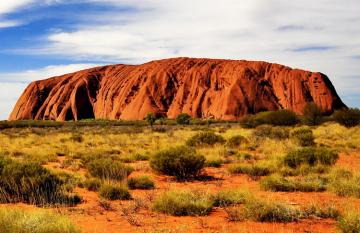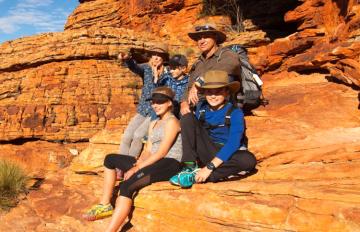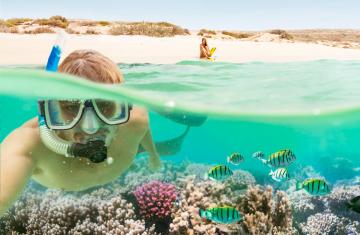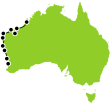
There is no better way to get to know the real Australia than embarking on a campervan trip through its spectacular landscapes. But it’s not always easy to know where to go and how to best prepare for your adventure. We’ve put together a comprehensive guide to make your campervan drive Down Under the experience of a lifetime.
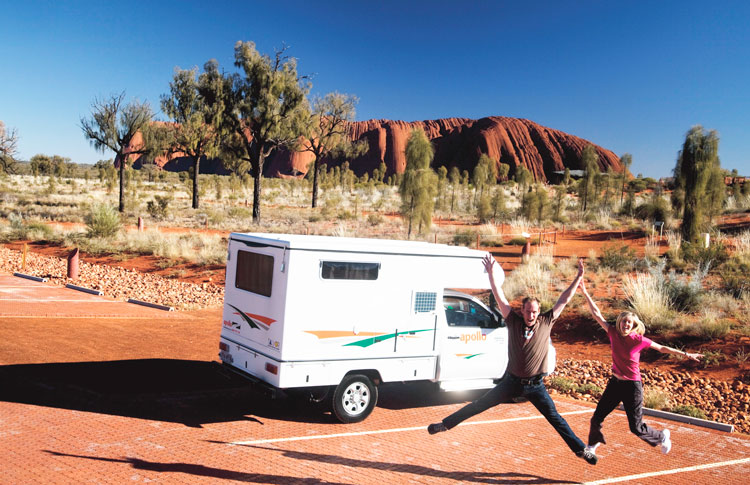
Visiting Australia in a Campervan
Campervan driving in Australia is a popular way to visit the country among local and foreign travellers. Taking a road trip is one of the best ways to experience the country and its beautiful scenery, including remote spots that are inaccessible by air or train. Driving a campervan not only allows for freedom and flexibility, but it can also save you hundreds of dollars on accommodation costs.
Campervan trips are ideal for covering great distances no matter whether you intend to travel for just a few days or for longer periods of time. Australian roads are well-maintained, long drives are wonderfully picturesque, and there is no shortage of camping areas with top-notch facilities throughout the country.
Travelling in a campervan in Australia is suitable for everyone, from couples and families with children to friends and adventurers. You can combine all the comforts of a home with the freedom to spend your time outdoors and explore at your own pace.
When is the Best Time for an Australian Campervan Trip?
Weather
Educating yourself about the Australian climate is essential for a successful trip. Foreign travellers should keep in mind that Australia is situated in the southern hemisphere, which means that the seasons are opposite to many other countries. Summer in Australia falls between December and February, while winter begins in June and lasts until August.
In general, the ideal time to travel in Australia is spring or autumn (fall) for the all-around moderate weather. Summer in the north can mean impassable flooded roads and tropical storms. In Tasmania, it’s best to avoid the mid-winter period from June to August when temperatures oscillate between 3 and 11°C (35-50°F) and it may snow in some areas.
Consider the places you would like to explore and time your trip accordingly. Alternatively, if you are only able to take the trip at a certain time of the year, visit the areas that are best suited for travel during that period.
Further reading: When is the best season to travel to Australia?
School Holidays
The peak school holiday season in Australia is Christmas break from December to early February. Taking a road trip during this period means greater competition for both campervan rentals and campsite spots. Beaches and attractions get much busier too.
If you are travelling on a budget, taking the trip off-season can be a great option.
Tips for visiting Australia in Summer
How Long to Stay
The time you should spend on the road largely depends on your itinerary. You will need around 7 days to cover the distance between Melbourne to Brisbane or Brisbane to Sydney, for example. If you plan to travel from Darwin to Adelaide, make sure you have at least 2-3 weeks at your disposal. A drive from Darwin to Perth will take about 3 weeks or more.
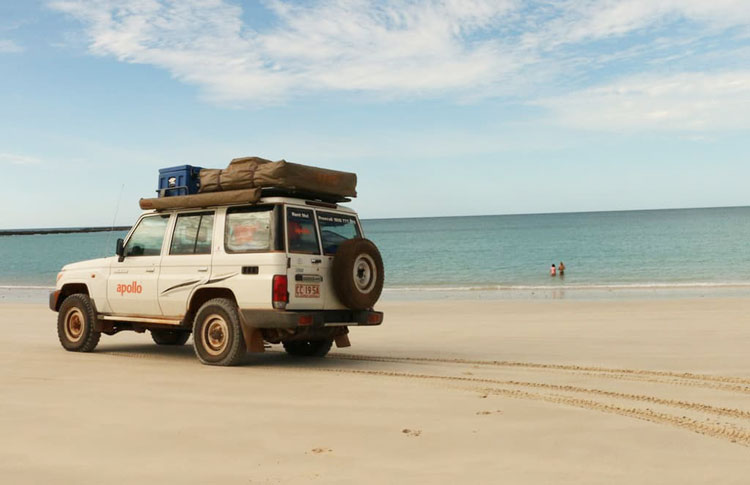
Choosing Your Itinerary
Popular Routes
Australia is a huge country, and choosing the perfect route isn’t always simple. Some of the top places to visit include:
The Great Ocean Road with its epic shoreline, excellent campsites and breathtaking sunsets
North Queensland and its rainforests and the Great Barrier Reef
Western Australia for its wilderness, outback, and pristine beaches
The Red Centre for an authentic outback experience and Uluru
Tasmania for its natural beauty, amazing landscapes, and secluded beaches
If you’re after an off-the-beaten-track adventure, head to Western Australia or the Northern Territory. City-lovers will appreciate the more densely populated south-east, and beach fans will love the sunny Queensland coast.
Pro Tips for Choosing a Campervan Itinerary
If you arrive and depart from different Australian cities, you’ll avoid having to drive along the same roads.
Try to fit both cities, beaches, and natural spots—including a detour into the Australian outback—in your itinerary.
First-time campervan drivers may prefer to focus on the south-west corner of Western Australia or Tasmania. Distances between destinations are shorter, but there is still plenty of wonderful scenery to enjoy.
First Light Travel can help you put together the perfect self-drive itinerary for your trip. Let us know your preferences, and our local experts will get back to you within 24 hours with a personalised suggestion for your adventure. This service is free of charge and will guarantee an enjoyable and stress-free holiday planning experience.
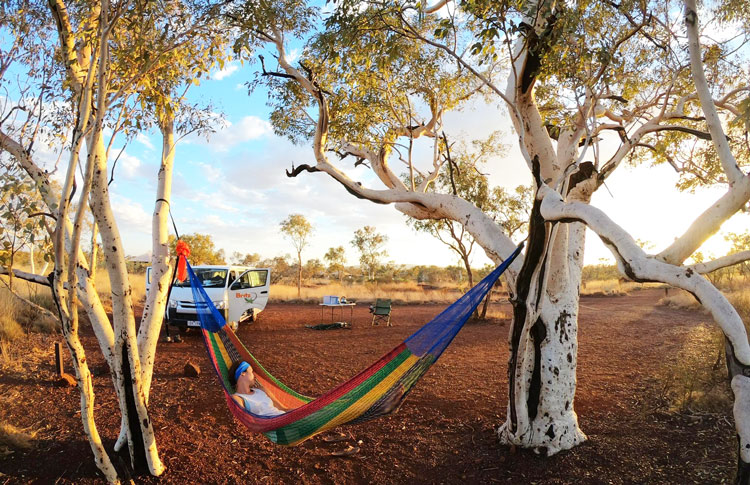
Campervan Features
Should You Hire or Buy a Campervan?
Hiring a campervan for your Australian road trip has several advantages:
Your vehicle is guaranteed to be roadworthy
There is always someone to turn to for help and advice
Roadside assistance is usually included in the price
You can pick up and drop off the campervan when and where it suits you
Camping equipment and bedding are often included in the rental
However, buying a campervan can be a cheaper option if you are planning a longer trip for over 8 weeks. Buying a campervan will give you the flexibility to travel wherever you want and change your mind along the way.
Keep in mind that when buying a campervan, you should allow about 2 to 3 weeks to search for the vehicle and the same amount of time for reselling it.
In addition, complex administrative procedures might be involved in registering the vehicle (registration laws differ from state to state).
How to Choose Your Vehicle
Choosing a campervan is a big commitment, as it will be your home for the duration of your trip. Before you decide on a vehicle, be sure to check the following:
Is it automatic or manual transmission?
How many seat belts are there? Are they attached to the vehicle frame (which is the safest option) or the interior cladding?
Are the seats forward and rear-facing or sideways facing? The latter is a less safe alternative.
Is there enough storage space? Can cupboards and drawers be locked to prevent items from falling out?
What are the additional costs, such as the deposit, insurance, and extra amenities?
When you hire a campervan or motorhome, companies will usually offer you several insurance alternatives. Read the policy carefully before you make your decision.
Examine the vehicle for condition and size. Even if it says that a campervan sleeps 6, it doesn’t necessarily mean it can fit that many people comfortably.
Make sure that your hire company has a drop-off location at your final stop. Check whether there are any extra drop-off fees.
Read the company’s reviews online before deciding to hire a vehicle.
Campervans are typically equipped with essentials like beds, sinks, kitchen utensils, cooking facilities, a fridge, and air-conditioning. Depending on the size of the vehicle, some also have a toilet and a shower. If needed, you can always supplement the existing equipment with traditional camping gear.
Alternatively, you may want to go for a larger, self-contained motorhome. Although motorhomes are pricier and more challenging to drive and park in cities, they provide more space and extra comfort ideal for families or larger groups.
Pro Tips for Choosing Your Campervan
There is a great demand for campervans in Australia and booking early is highly recommended.
Choose a one-way rental if you would like to catch a flight back home from another city.
Some companies are closed for pickups or drop-offs on weekends. Always check their opening hours in advance.
Inform the rental company about your itinerary. It is important that you are assigned a vehicle appropriate for your planned route and weather conditions.
Some companies will fit bike racks on the back of their campervans and hire bikes too, which can give you extra freedom.
Keep in mind that equipment and conveniences in campervans can vary. Take your time to verify what they are to make sure you’ll have everything you need for a comfortable trip.
Some companies don’t hire campervans to drivers under the age of 21 and larger motorhomes to under 25s.
Where to Hire a Campervan?
With road trips being so popular in Australia, there are dozens of campervan and motorhome hire companies to choose from. Some trustworthy options are Spaceship, Britz, and Maui. Rental prices start at AUD$45 per day.
Comparison websites for such as Campervan Hire Australia and DriveNow are useful for helping you find the best alternative that fits both your budget and preferences.
Hiring a campervan through an agent like First Light Travel has several advantages. In addition to personalized service, it will usually not cost you more, and can sometimes be cheaper than booking directly.
As a part of our service, we will source the perfect vehicle for your trip to fit both your budget and preferences. Just tell us about your requirements and we’ll be happy to do the rest.
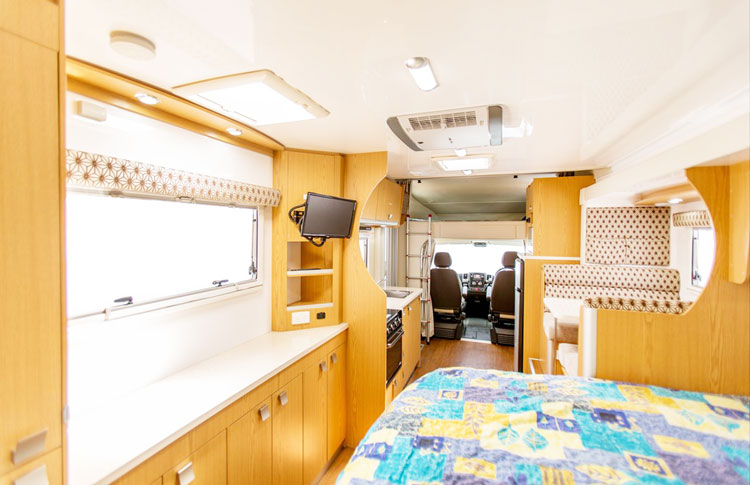
Other Considerations
Finding Food and Water
Towns in Australia can be a few days drive apart. It is, therefore, essential to bring enough supplies, including plenty of food, water, and fuel, and restock whenever possible to avoid any unpleasant surprises.
- Choose the biggest supermarkets you can find as they are significantly cheaper than gas stations and small stores. The farther you go from the big cities, the more expensive food and fuel will get.
- Always make sure to carry enough water. You will need at least 4-5 litres per person per day. The hotter it is, the more water you will need.
Campervan Must-Haves
Here are a few more items that will make your campervan holiday more comfortable and safe:
a good high lift jack and a base plate
a long-handled shovel
two spare tyres
basic tools
rechargeable lantern or head torch
a whistle
dry cell battery charger circuit
12v power board
extra bedding
books and music (download playlists on Spotify Premium to enjoy offline)
Fuelling Up Your Van
Close to 80% of the Australian population lives by the coast, and in those areas, there is a good choice of places to refuel. In remote places, however, service stations can be few and far between. Make sure that you have enough fuel and make an estimate of how far your campervan can make it on a tank. After calculating your fuel requirements, you may decide that you need a jerry can. The size of your tank, fuel type, and average consumption will determine how far you can drive between fill-ups.
Road signs usually indicate how far it is to the next petrol station. If you see a sign that says no fuel for 200 km (125 miles) don’t think twice. Top up even if you still have half a tank, just to be on the safe side. Many smaller towns have only one gas station and often close as early as 4 pm.
All stations in Australia offer petrol and almost all have diesel. Petrol comes in unleaded and leaded grades and is sold by the litre. Fuel costs in general between AUD$1.25 and AUD$1.70 per litre and more in remote areas. If you’re looking for the cheapest fuel or want to know how close the nearest petrol station is, download MotorMouth or FuelMap. Both apps list all the current fuel prices around the country.
Powering your Campervan
Your campervan will most likely have an ancillary battery system that provides electrical power to a fridge, lights, and various outlets. This power source is recharged when you drive faster than 80km/h for a few hours. The battery system will provide power for between 12 and 20 hours when fully charged depending on use. If you stay put for several days, drive short distances or slow down in the city, you may end up losing power unless you plug the van into a power source.
Campervan Maintenance
You are responsible for the rental campervan and, needless to say, you should treat it like you would your own vehicle. It is advisable to carry out basic maintenance checks, including coolant levels and tyre pressure, every 500 km (310 miles) or so.
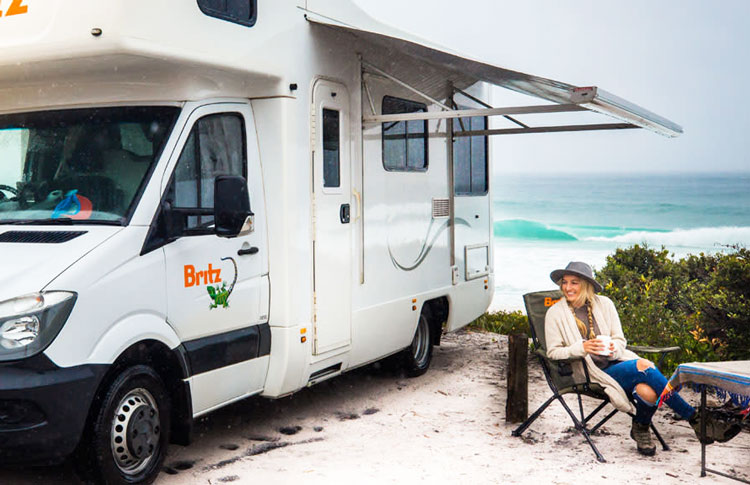
Campervan Driving and Camping
Overnight Parking
Overnight campervan parking in Australia is not permitted inside city limits, at the side of the roads, or in rest areas. The good news is, there’s an abundance of designated campgrounds or holiday parks, as they are called in Australia.
Some camping grounds are marked as “self-contained”, meaning that you’re not allowed to leave anything behind, including general and toilet waste, and any used water.
Caravan Parks
Australia boasts an extensive network of caravan parks in all major tourist centres and most towns. Caravan parks offer excellent recreational opportunities, plus showers, toilets, and laundry facilities. Campsites will cost you between AUD$20 and AUD$60 per night, depending on their location and facilities.
Powered caravan parks come at an additional cost of AUD$2- AUD$15 per night. If you have a full battery from highway driving and don’t need the power, you can save some money by choosing an unpowered site.
There is usually no need to book in advance, although this could be wise in peak periods in popular destinations. Camps and WikiCamps Australia apps are useful resources for comprehensive information about Australian camping sites, including places where you can overnight for free.
National Parks
Most national parks set aside dedicated areas for camping with showers, toilets, barbecues, and picnic areas. Note, however, that national parks rarely offer powered sites.
While camping is usually allowed, it often requires purchasing a camping permit. The fee is around AUD$6 per person per night.
Visit the parks’ websites to find out about their rules around camping and charges.
Freedom Camping
Freedom or bush camping is the ultimate Australian outdoor experience. Keep in mind, however, that each state and territory has different laws regarding freedom camping. Also, these are non-powered sites and visitors are expected not to leave any trace of pollution.
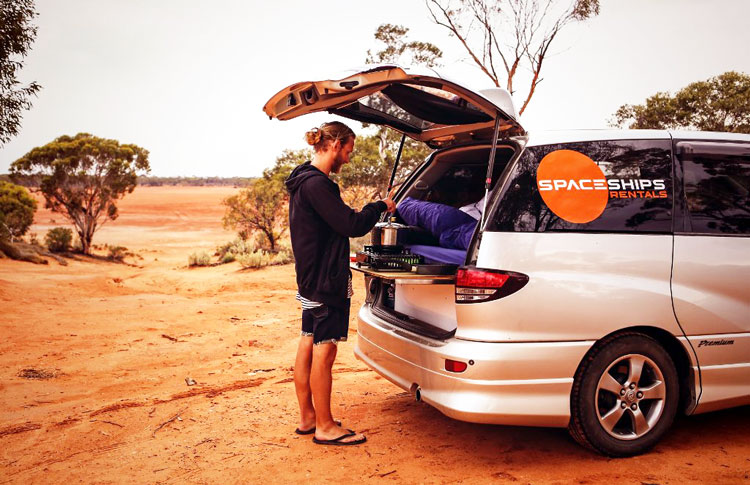
Campervan Driving and Safety
Safety Basics
There are some basic safety considerations to keep in mind when driving a campervan in Australia:
The driver and all passengers are required to wear seatbelts. There are heavy fines for not complying with this rule.
Children under the age of 7 must be in a child restraint appropriate for their size and weight.
You are not allowed to drive if your blood alcohol level is more than 0.05% or under the influence of drugs.
Using a handheld mobile phone while driving is not permitted.
Make sure you know the height of the campervan and beware of driving into car parks and under bridges.
Always drive with your headlights on, also in daylight. This will make it easier for other vehicles (and animals) to see you.
Avoid driving at night when wildlife is at its most active.
Don’t leave valuables unattended or on display in the vehicle.
Keep essentials such as a torch and the road assistance number easily accessible.
Always inform someone about your itinerary and when you expect to reach your destination.
Driver Fatigue
An estimated 20-30% of all fatal accidents on Australian roads are due to fatigue.
For your safety, drive only when well-rested. It is recommended that you drive for up to two hours at a time, taking regular stops for at least 15 minutes. Try to limit the maximum distance covered to 300 km (186 miles) per day.
If you are used to driving on the right side of the road, it is even more important to concentrate at all times. Many intercity roads have no median barriers, and you can easily drift off to the wrong side when you are tired.
If you’re arriving in Australia from a long-haul flight, stay at least one night in a hotel before picking up your van the next day. Extreme tiredness due to jet lag can make driving an unfamiliar vehicle unsafe.
Keep an eye out for Driver Reviver Sites, places specially designated to stop for a break where you can have some coffee and snacks. The sites operate during school holidays and public holidays, but their rest areas are open continuously. Plan ahead and decide which rest areas to stop at during your journey.
Wildlife
Many outback animals are nocturnal and become active in the evenings when it gets cooler. Kangaroos and wallabies are known for sitting in the grass at the edge of the road and suddenly jumping out in front of vehicles.
It is advisable to drive only between dawn and dusk to avoid collisions with kangaroos, wombats, emu, and deer.
If an animal crosses the road in front of you, reduce the speed and don’t swerve violently or you may roll the car. Make sure to keep the campervan on the same line, slow down, and stop if possible.
If you injure an animal, try to give it assistance and call a wildlife rescue group such as WIRES, Native Animal Rescue, and Wildcare Australia for help.
Road Trains
While driving in Australia, chances are you will spot giant triple-trailer trucks known as road trains.These are the world's longest trucks and can be over 50 m (164 feet) long—that's as long as 4 buses combined.
These huge vehicles rarely slow down, and it’s a good idea to keep your distance when travelling behind them. Slow down and pull to the left when a road train is approaching to give it the centre of the road.
The Northern Territory Government website provides detailed information on how to drive safely along with road trains.
Maps
Having a current paper or online map of the area while driving in Australia is a must.
Maps.me is a free app that can be used offline. All you have to do is download the maps of the states and areas where you’re headed and use them when needed.
GPS systems are a great option when you are venturing off the beaten track. Garmin and Hema sell good GPS systems with detailed maps of Australia including free updates.
If You Need Help
When travelling in the Australian outback, you need to be self-sufficient and prepared for emergency situations.
The safest thing to do in case of an emergency is to stay in your campervan. Leaving to look for help could mean that you spend hours walking around under the scorching sun and soaring temperatures before you come across help.
Knowing that more than two-thirds of Australia has no mobile coverage, it’s wise to consider renting a satellite phone and a radio set with an emergency button if you are planning any extended trips in remote areas. SatPhone Shop has a good range of satellite phones for both rental and purchase, and a radio set can be rented from BTW communications.
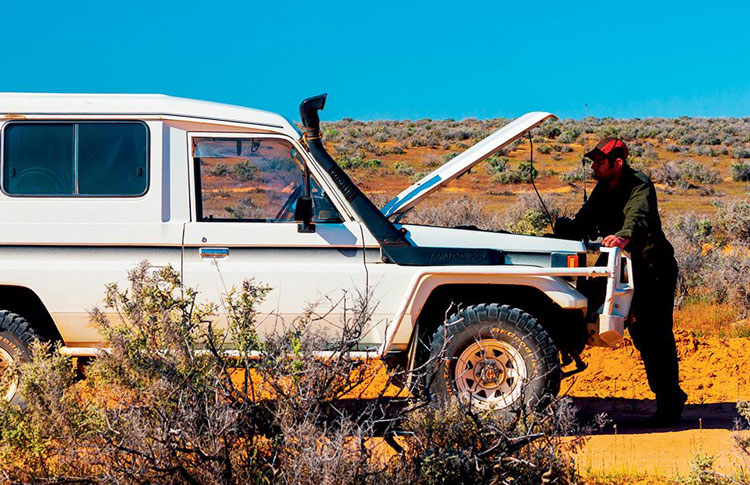
Have a look at the First Light Travel page dedicated to Self Drive Itineraries, you narrow your search down to specific regions from there. There are plenty of options to choose from.
Or, feel free to jump on the phone (or chat online) with FLT’s friendly staff and create your own customised trip.
More Articles to Help You Create Your Dream Trip To Australia
Australia Trip Planning Guide
Australian weather, temperatures & rainfall
Our informative Australia Travel Blog
Trip Inspiration: Amazing Australian Landscapes
Travelling Safely in Australia
Recent Posts
Blog Categories
Blog archives
- April 2024 (1)
- March 2024 (13)
- February 2024 (3)
- January 2024 (5)
- December 2023 (6)
- November 2023 (4)
- October 2023 (11)
- September 2023 (2)
- August 2023 (6)
- July 2023 (2)
- June 2023 (17)
- May 2023 (3)
- April 2023 (5)
- March 2023 (8)
- February 2023 (9)
- January 2023 (12)
- December 2022 (9)
- November 2022 (12)
- October 2022 (12)
- September 2022 (12)
- August 2022 (6)
- July 2022 (9)
- June 2022 (7)
- May 2022 (3)
- April 2022 (4)
- March 2022 (6)
- February 2022 (1)
- January 2022 (4)
- December 2021 (2)
- November 2021 (3)
- October 2021 (1)
- September 2021 (4)
- August 2021 (10)
- July 2021 (13)
- June 2021 (6)
- April 2021 (2)
- March 2021 (2)
- February 2021 (1)
- January 2021 (1)
- December 2020 (2)
- November 2020 (3)
- October 2020 (2)
- September 2020 (1)
- August 2020 (1)
- July 2020 (1)
- June 2020 (1)
- May 2020 (1)
- April 2020 (1)
- March 2020 (1)
- February 2020 (2)
- January 2020 (4)
- December 2019 (2)
- November 2019 (1)
- October 2019 (1)
- September 2019 (5)
- August 2019 (1)
- July 2019 (5)
- June 2019 (1)
- May 2019 (1)
- April 2019 (1)
- March 2019 (1)
- February 2019 (1)
- January 2019 (1)
- December 2018 (1)
- October 2018 (1)
- May 2018 (1)
- February 2018 (1)
- December 2017 (1)
- October 2017 (1)
- June 2017 (1)
- May 2017 (1)
- February 2017 (1)
- January 2017 (1)
- September 2016 (1)
- August 2016 (2)
- July 2016 (1)
- June 2016 (1)
- May 2016 (1)
- April 2016 (1)
- December 2015 (1)




